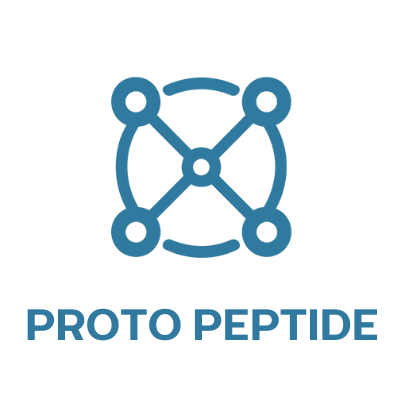Frequently Asked Questions
What are peptides?
Peptides are short chains of amino acids that play important roles in the body’s natural processes. They are commonly used in research and health sciences to explore various biological effects.

How do I know the peptides are authentic?
All products are lab-grade, manufactured under strict quality standards, and come with batch information for research verification. Check out our third party lab test's Certificates of Authentication.
How should I store my peptides once they arrive?
Peptides should be stored according to the manufacturer’s instructions, typically in a cool, dry place or refrigerated if required. Proper storage helps maintain stability for research purposes. Read our Peptide Storing Guide for more information on proper storing.
All peptides from our store are shipped in freezer-and fridge-safe containers.
Tip: Don't throw away the container and use it to hold your peptide vials in the fridge and freezer.

What’s the proper way to reconstitute peptides?
Check out our Peptide Reconstitution Guide for how to properly reconstitute your peptides
What solvent should I use to reconstitute peptides and how do I know how much to use?
Peptides are typically reconstituted with Hospira bacteriostatic water to maintain sterility and stability. The exact amount of solvent depends on the peptide weight and the desired concentration, which can vary by product. To make it easy, follow our Peptide Reconstitution Guide and use our Reconstitution Calculator — it will tell you the precise volume of solvent to add for accurate preparation.
Why is it so hard to draw out the peptides from the vial?
This usually happens because of pressure imbalance inside the vial. Peptide vials are manufactured with slight negative pressure to maintain sterility. Once solvent is added, the internal pressure changes. If too much positive pressure builds up, it can make it difficult to draw the solution into the syringe. Follow proper vial pressure balancing techniques, as shown in our Vial Pressure Balancing Guide.
What are subcutaneous injections and where are the best sites for injections?
Subcutaneous (SubQ) injections deliver a solution into the fatty tissue just beneath the skin, allowing for slower and more consistent absorption than intramuscular injections. The most common and recommended injection sites are the abdomen (avoiding the navel), outer thighs, and the back of the upper arms. Rotating sites helps prevent irritation and ensures more comfortable injections. Check out our ProtoLog Injection Tracking App for help with tracking injection sites and more.
Why is it important to wipe the vial with alcohol before use?
Even though we ship all peptides in fridge-and freezer-safe containers to protect them during transit and storage, wiping the vial top with an alcohol pad is still essential. This step maintains sterility and prevents contamination when puncturing the vial, ensuring your peptides remain safe and stable. For more detailed guidance, see our Peptide Storing Guide
Where do you ship to?
We ship throughout Canada and the USA. Customers are responsible for understanding and complying with local regulations.
